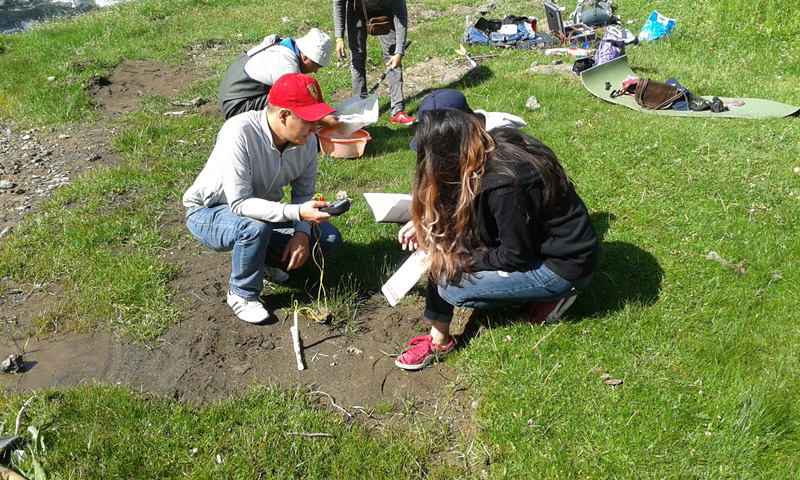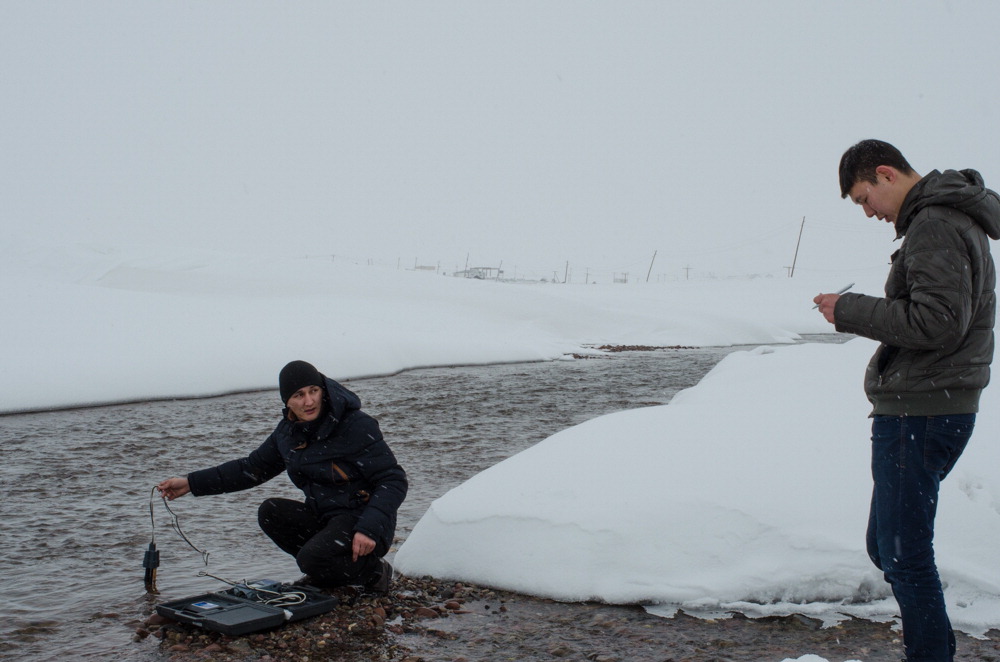|
Cycle 5 (2015 Deadline)
Integrated water resources management and strategic environmental assessment of Kabul and Amu Darya rivers
PI: Zheenbek Kulenbekov, American University of Central Asia
U.S. Partner: Forrest Melton, California State University Monterey Bay, and the NASA Ames Research Center Cooperative for Research in Earth Science and Technology
Project Dates: December 2016 to February 2020
Project Overview
Afghanistan has highlighted the need for improved water resource management as an essential first step towards rebuilding rural communities and improved human health. Food security in Central Asia and Afghanistan also represents a major and worsening problem. The agricultural sector will be an important focus for upgrading human capital skills, given the size of the rural population. The aim of this research project was to lift Afghanistan out of the identified knowledge gap on its water resources and remove existing barriers to sustainable integrated water resource development and management (IWRM) in the Amu Darya Basin, as well as promoting strategic environmental assessment. At the same time, the project aimed to provide transparency on the potential impact of integrated water resource development plans and ongoing projects to downstream riparian states, as well as the donor community. Because of its international position, American University of Central Asia took the lead in data generation and analysis on the project and collaborated with research and implementing agencies in Afghanistan, Tajikistan, and Kyrgyzstan.
The purpose of this project was to close the knowledge gap on water resources and potential irrigated areas within three sub-basins of the Amu Darya Basin within Afghanistan, as well as to help determine the legal obligations of Afghanistan to its riparian neighbors. The closure of this gap should help Afghanistan and the donor community to plan their sustainable water development and environmental assessment strategies and projects. The project research team worked to assemble a dataset on water availability, changes in irrigated areas, and the irrigation potential in the three target sub-basins. They also developed a model of impacts of ongoing rehabilitation projects in Afghanistan on lower provinces within the tributary basins, as well as riparian states within the Amu Darya Basin. They aimed to provide an array of cost-effective tools to agricultural producers in the three sub-basins of the Amu Darya River Basin to assist them with optimizing irrigation scheduling and maximizing crop yields with the water available each year. In addition, they developed new tools for quantifying and forecasting irrigation demand to water managers in order to help schedule water deliveries to growers effectively
 |  | | The team conducted a series of tests during an expedition to the Kysul-Suu, Dara, and Aryk-Suu rivers. |
Final Summary of Project Activities
Over three years the project team successfully completed its planned objectives and closely followed the established timeline of activities. Automatic weather stations were set up in the target villages to have ground data and two field trips were conducted annually to the study areas for in-situ investigations and analysis of water and soil samples. A socioeconomic survey was also conducted in the study areas to accurately understand the day-today lives of local people including the types of crops cultivated, types of livestock bred, yield and quality of crops and domestic animals, level and usage of modern techniques and equipment in agricultural irrigation and animal husbandry, and use of contemporary technologies at schools and local administrations. Vegetation index correlation with weather data of research areas was performed using satellite images for NDVI calculations that helped the team identify plant stress in the target areas. A variety of thematic maps in 2D and 3D were designed using remote sensing and GIS tools to support regional projects. Hydrological modeling to calculate runoff of the studied rivers was still ongoing at the time project ended.
Three theses at the bachelor’s level were written and defended successfully under the auspices of the project with two others ongoing. One PhD student was also supported. Several scientific papers based on outcomes of partnering teams in three partner countries were published in peer reviewed conference proceedings and international journals. Illustrated and informative brochures and leaflets about the research achievements of each partner country were published and disseminated among appropriate regional centers, universities, local administrations, NGOs, and high schools to inform stakeholders and decision makers.
The regional project enabled the team to collaborate with many research institutions and local and international organizations including the National Academy of Sciences of each partner country, UNDP, CAREC, CAIAG, CARAWAN, ECOIS, Kyrgyz State Agency for Water Resources, local administrations, Move Green, IWMI, ICRAFT, ISTC, BGI USAID, BRI Kazakhstan, the US Embassy Kazakhstan, and international universities. Three regional workshops were hosted in partner countries including one workshop at the partner institution which provided information for local stakeholders including relevant state agencies, local authorities, institutions, and NGOs. The final international conference called "Current and Future State of Water Resource Management and Environment in Central Asia" was hosted by AUCA and had stakeholder participants from the United States, Europe, Japan, Russia, Afghanistan, Tajikistan, Uzbekistan, Kazakhstan, and Kyrgyzstan.
(Sadly, Dr. Kulenbekov passed away on September 23, 2022, at the age of only 56.)
Publications
Zheenbek E. Kulenbekov and Bakhtiyar D. Asanov, eds. 2021. Water Resource Management in Central Asia and Afghanistan: Current and Future Environmental and Water Issues. Springer Water. https://doi.org/10.1007/978-3-030-68337-5
Zh. Kulenbekov, S. Orunbaev, B. Asanov, and B. Sharipov. Vegetation Stress Study in Chon-Alai Area Using NDVI, Kyrgyzstan. TEST Engineering and Management 81: 5062-5084.
M. Avazbekova, A. Aitbaev, Zh. Kulenbekov, M. Nurgaziev, and B. Asanov. 2019. Environmental and Socio-Economic Assessment of Vulnerable Villages in Kyrgyzstan. Comparative Analysis of Kuntuu, Boroldoi, Oirondu and Daroot Korgon Settlements. Proceedings of the IX International Scientific and Practical Conference Social and Economic Aspects of Education in Modern Society Vol.2, January 20, 2019, Warsaw, Poland.
Back to PEER Cycle 5 Grant Recipients
|
|
|
|





